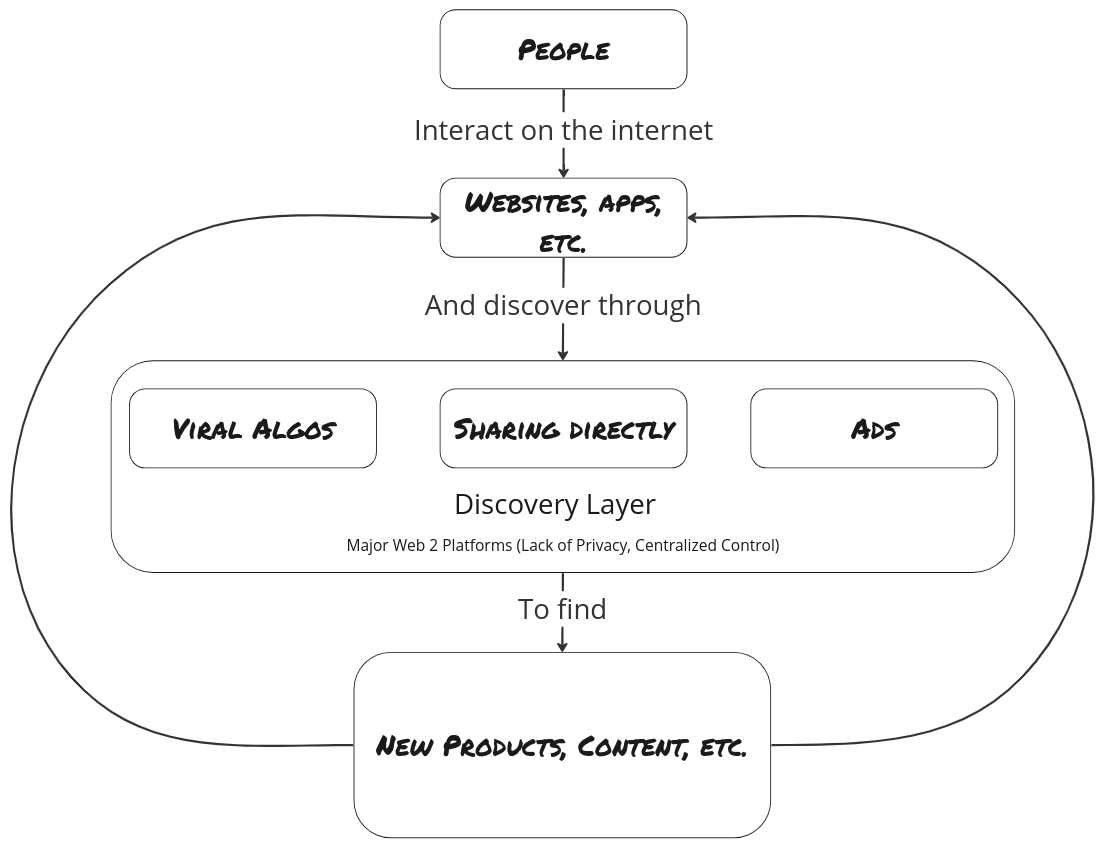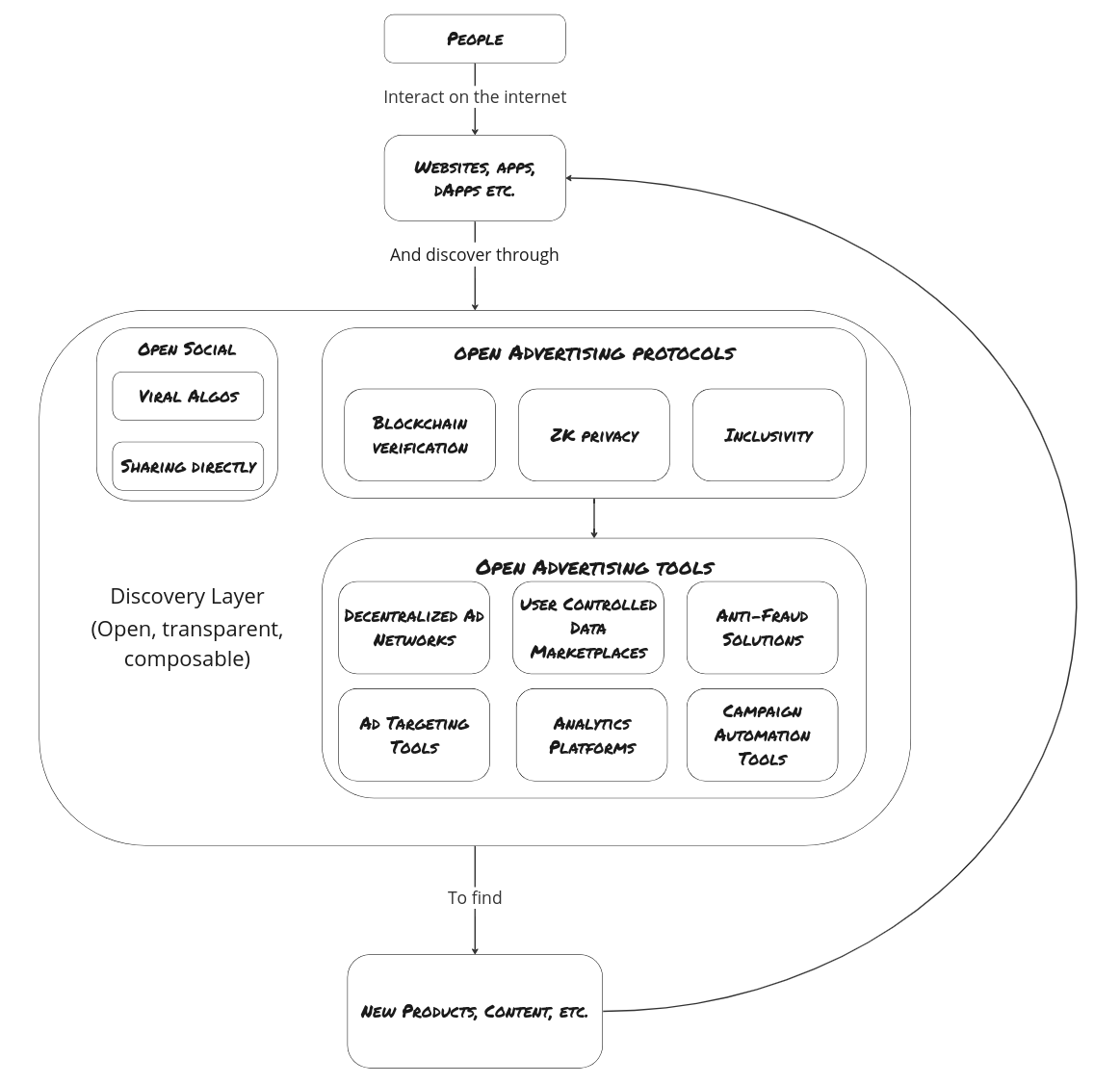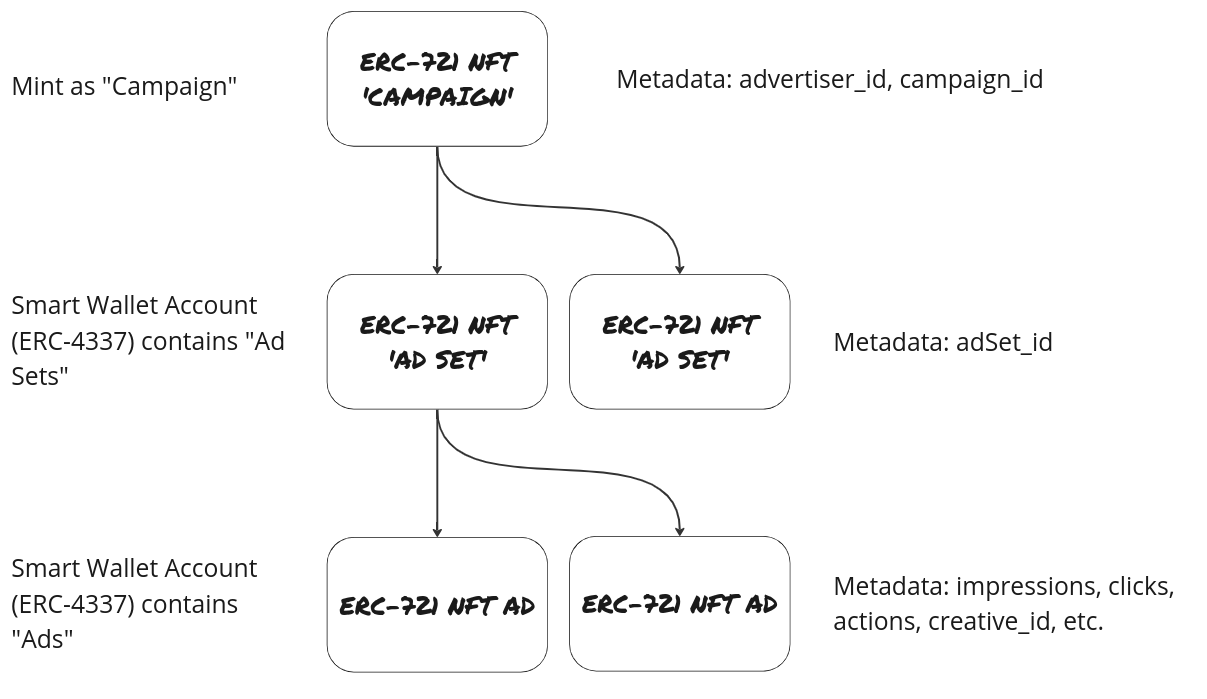Note: This was originally published here by OAP co-founder koziak.eth
Introduction
The rapid evolution of the internet has brought us to the beginning of a new era: Web3. Unlike the centralized and siloed systems of Web2, Web3 champions decentralization, peer-to-peer interactions, and transparency. But, as we step into this decentralized future, there's a pivotal need for an open discovery layer to nurture the growth we've experienced so far.
The Internet’s current discovery layer’s power is concentrated in the hands of a few dominant platforms. This not only encompasses advertising, but social media as well.
Imagine a future where user privacy is built into online ads, the value generated by this data is more equally distributed, and advertisers and publishers can trust they are getting what they are paying for. Utilizing blockchain, and more specifically, Zero Knowledge technology, a decentralized advertising layer can tackle these problems and create a more equitable online experience for all. For this post we will concentrate on new advertising technology when we say “discovery layer”, though, to keep things focused.

What is an Open Discovery Layer?
An open discovery layer operates as an decentralized intermediary between advertisers, publishers, and end-users. This layer ensures equitable, transparent, and efficient distribution of content or assets, ensuring everyone gets fair value without centralized gatekeepers.

Because of the open nature of decentralized protocols, open advertising protocols can provide a platform for anyone to build tools that will bring value to components in the ecosystem.
Furthermore, technical improvements to blockchain platforms like Ethereum, including ERC-6551 and zero knowledge proofs, are creating the perfect environment to build an open layer for product distribution on the internet.
At it's core, creating an open layer for discovery will lead to more experimentation in the stagnant ad industry, leading to a better and more equitable experience for all in the future attention economy.
Advantages for Advertisers
Transparency and Trust
In the realm of advertising, the clarity of transactions and placements is paramount. Decentralized ad networks built on open advertising protocols will allow advertisers to have a clear view of where their ads are being placed. This ensures that ads reach the intended audience and are not misplaced or misrepresented, fostering a greater sense of trust between advertisers and the platforms they use.
The ERC-6551 standard can be used to create NFT ads that tie performance immutably to an ad.

In the example above, the ERC-6551 standard can be used to create a transparent folder structure to easily understand the chain of ownership. Updating metadata at the ad level will provide the necessary transparency to understand performance metrics at the ad and ecosystem level.
Cost Efficiency
One of the significant advantages of an open discovery layer is the potential reduction of intermediaries. Traditional advertising models often involve several middlemen, each taking a cut of the profits. By leveraging an open advertising protocol, advertisers can bypass many of these intermediaries, leading to potential cost savings. This means that more of an advertiser's budget can be directed towards the actual promotion, rather than administrative or intermediary costs.
Creating new ad standards that, for example, support advertisers broadcasting their intent to pay for new users, essentially making each advertiser their own ad exchange will flip the advertiser / publisher relationship on it's head. Advertisers will be able to control which publishers can access their demand and publishers will have to keep the quality of users they send to advertisers high.
An example of what can be built with the above is a service for ad publishers that optimizes advertising content based on ZK proofs of users' in-app actions.
Fraud Reduction
The transparency inherent in blockchain technology can play a pivotal role in reducing ad fraud. Every transaction on the blockchain is recorded and can be verified by all parties involved. This transparency ensures that all parties can audit transactions, making fraudulent activities more challenging to execute and easier to detect.
Open protocols may introduce the potential for bad actors to game the system, however, but the open nature also allows the creation of fraud detection tools and registries to combat this issue.
Advantages for Publishers
Fair Compensation
Publishers often grapple with opaque pricing models and arbitrary rates. With open networks, they are assured of fair compensation for their ad spaces. Transparent metrics drive this, ensuring that pricing is based on clear and verifiable data.
Direct Advertiser Relationships
The elimination of middlemen in decentralized networks allows publishers to form direct relationships with advertisers via use of a discovery layer protocol. This direct communication can lead to more tailored and effective advertising campaigns, benefiting both parties. Publishers can have the option of controlling their user's advertising experience at an ecosystem level instead of at the network level.
Diverse Revenue Streams
An open advertising protocol, especially those utilizing smart contracts, offer publishers the flexibility to incorporate a variety of revenue models. From traditional pay-per-click models to more intricate conditional payment structures, publishers have a broader range of options to monetize their content.
As the use of zero knowledge proofs increases, the use case of showing a user the right offer at the right time will unlock a world of payment options that are underwritten by adverting dollars. A diverse number of algorithms that will allow a publisher to offer multiple ways to maximize revenue at the user level.
Advantages for End Users
Privacy
A massive subject that cannot be fully explored here, but at it's core a decentralized discovery/distribution layer must prioritize user data sovereignty to ensure maximum privacy. Unlike centralized systems, where user data can be a vulnerable point of exploitation, decentralized networks can offer better safeguards, ensuring that users are not unwittingly exploited for ad targeting. Again, ZK proofs will play an integral role here. If natively built into a discovery protocol, we are on our way to user control of the advertising landscape. This will open up entirely new ways of thinking by advertisers to get their products noticed.
Monetization Opportunities
The advent of Web3 technologies presents users with unique opportunities to monetize their attention or data sharing. This means that users can effectively become stakeholders in the advertising ecosystem, benefiting directly from its growth and success.
For example, a ERC-6551 smart wallets that distribute discovery protocol sub-tokens could distribute referral rewards earned from advertising fees.
Relevant Content
As decentralized advertising systems become more transparent and efficient, end users stand to benefit from more relevant ad content. This efficiency can lead to a reduction in the barrage of irrelevant ads, enhancing the user experience.
A discovery protocol can give users the tools to block categories of ads (casino, for example) or ad types (video, popup, etc), at the browser level with extensions or even at the OS level in the case of EthOS.
Advantages for Those Outside Traditional Networks
A decentralized discovery layer on the internet offers a beacon of hope for those in regions or situations where traditional centralized ad networks might be inaccessible or show bias. The playing field is leveled, allowing anyone, regardless of their location or status, to join and participate.
There is more opportunity for small players because they can leverage the entire network to work to their benefit. Instead of adapting to the rules of centralized behemoths, the composability of the open advertising stack will open new markets for product distribution in areas yet to be seen.
Futureproofing the Web: Strengthening the Case for an Open Discovery Layer
The digital landscape is rapidly evolving towards decentralization. By establishing systems that support this shift now, we can ensure a smoother transition in the future. This proactive approach can help mitigate potential conflicts and systemic shocks that might arise from a sudden shift.
By championing an open discovery layer, the digital space can move towards setting global standards. These standards can cover various aspects, from transparency to payment and content distribution, making the digital realm more predictable and trustworthy for all stakeholders.
Let’s create resilience. Our current system is vulnerable to failures, hacks, or control by a single entity. Decentralizing the discovery layer of the internet will distribute risk and control, ensuring greater longevity and stability for everyone.
The evolution towards Web3 is more than just a technological shift; it represents a fundamental change in how we perceive and interact with the digital realm. By advocating for an open discovery layer, particularly in sectors like advertising, we are addressing present-day challenges. More importantly, we are laying the groundwork for a digital future that promises to be more inclusive, transparent, efficient, and open.
Find us at oap.gg and follow us on Farcaster @oap or on X (Twitter) @openadsprotocol.

